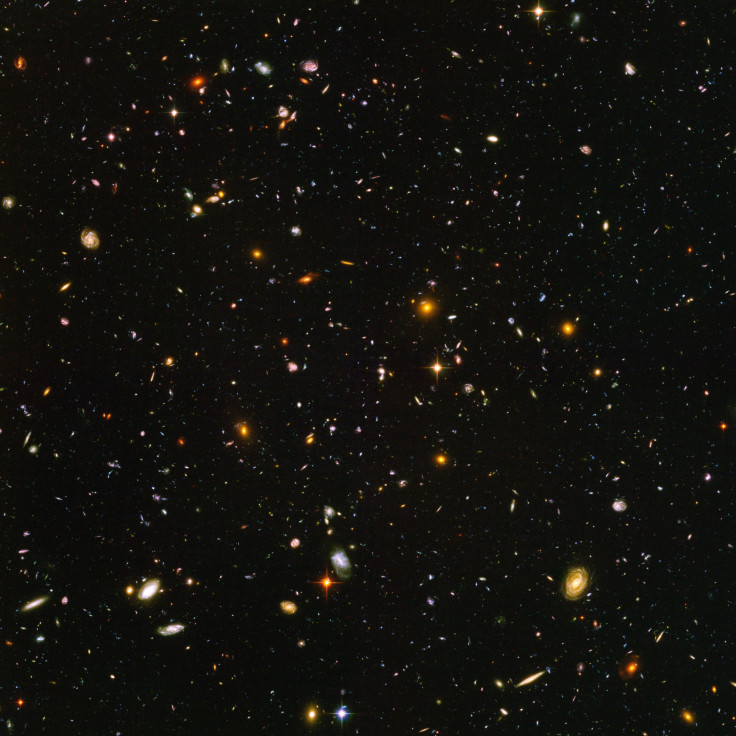NASA's Hubble Captures Stunning 'Cosmic Ducks' In Incredibly Detailed Image [PHOTO]

NASA's Hubble Space Telescope has captured an incredibly detailed image of the stunning Messier 11.
Also known as the Wild Duck Cluster, the open star cluster Messier 11 can be found in the southern constellation of Scutum (The Shield). And NASA gave everyone a close-up view of a portion of it in a new Hubble image posted on its official Twitter.
#HubbleFriday This star-studded image shows us a portion of Messier 11 which is also known as the Wild Duck Cluster, as its brightest stars form a “V” shape that somewhat resembles a flock of ducks in flight: https://t.co/zLtnQ6xg01 pic.twitter.com/rRqvm1R14q
— Hubble (@NASAHubble) March 29, 2019
The Wild Duck Cluster got its name from the shape of its brightest stars, which "form a 'V' shape that somewhat resembles a flock of ducks in flight." Considered to be among the "richest and most compact open clusters" discovered by man, Messier 11 is believed to have formed around 220 million years ago, according to NASA's website.
Unlike their globular cousins, open star clusters usually have fewer and younger stars. Messier 11 is a typical open cluster this way. It contains many blue stars, which are described as the "hottest and youngest" of the few thousand stars in the Wild Duck Cluster, in its center.
Another difference between open and globular types is that the former usually have shorter lifespans. The stellar residents of open clusters have a greater distance from each other, so they are not as strongly bound to each other’s gravity compared to the stars of the globular clusters. Due to this, it is much easier for gravitational forces to force the stars in open clusters apart.
Scientists estimate that Messier 11 will lose its stars gradually over the next few million years until the open cluster eventually disperses completely.
The Messier 11 is just one of 110 astronomical objects observed and cataloged by French astronomer Charles Messier. Messier's "Catalogue of Nebulae and Star Clusters" consists of a diverse range of astronomical objects, ranging from star clusters and nebulae to galaxies.
The Hubble telescope also recently captured another stunning object in the night sky: the Messier 28.
#HubbleFriday Hubble captured this image of Messier 28, a globular cluster in the constellation of Sagittarius (the Archer), in jewel-bright detail. It is about 18,000 light-years away from Earth: https://t.co/JUyMWIRnEr pic.twitter.com/yZqf2eR7vA
— Hubble (@NASAHubble) March 15, 2019
Unlike the Wild Duck Cluster, M28 is a globular cluster located 18,000 light-years away from Earth in the constellation of Sagittarius (the Archer). It was mistakenly described as a "[round] nebula containing no star" by Messier back in 1764 as nebula was often used for an astronomical object that had not been clearly localized at the time.
© Copyright IBTimes 2025. All rights reserved.





















